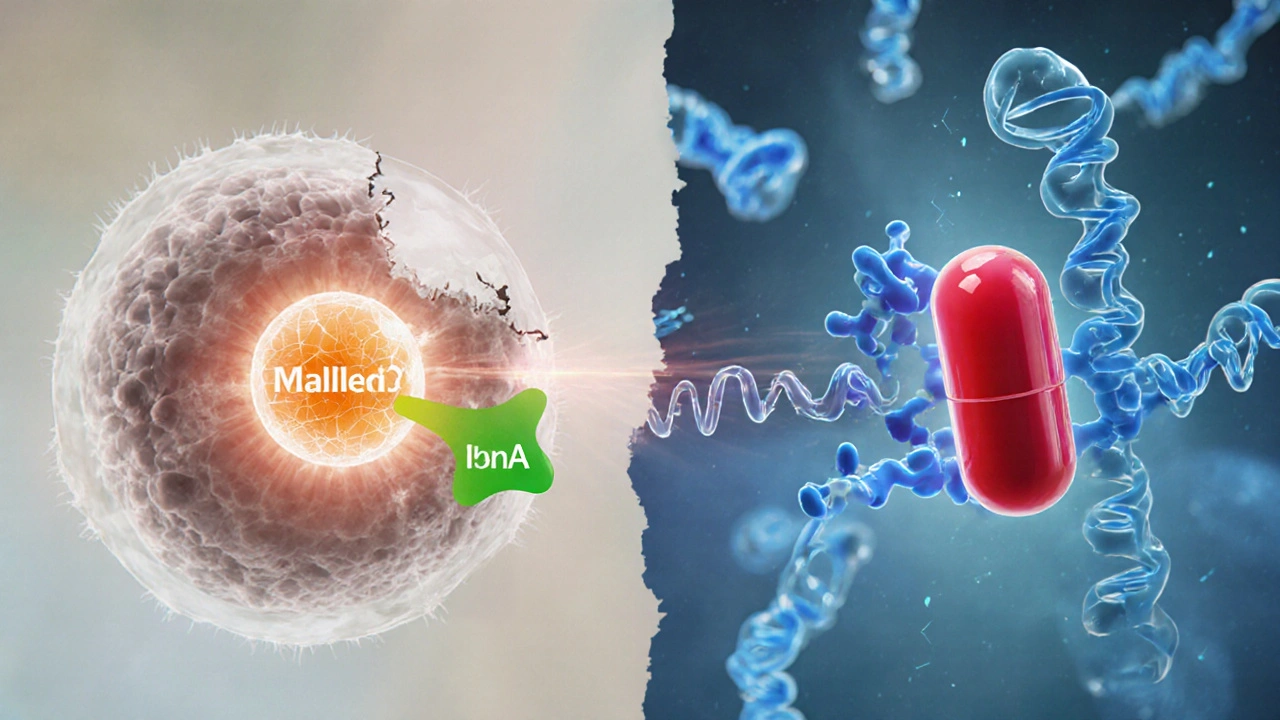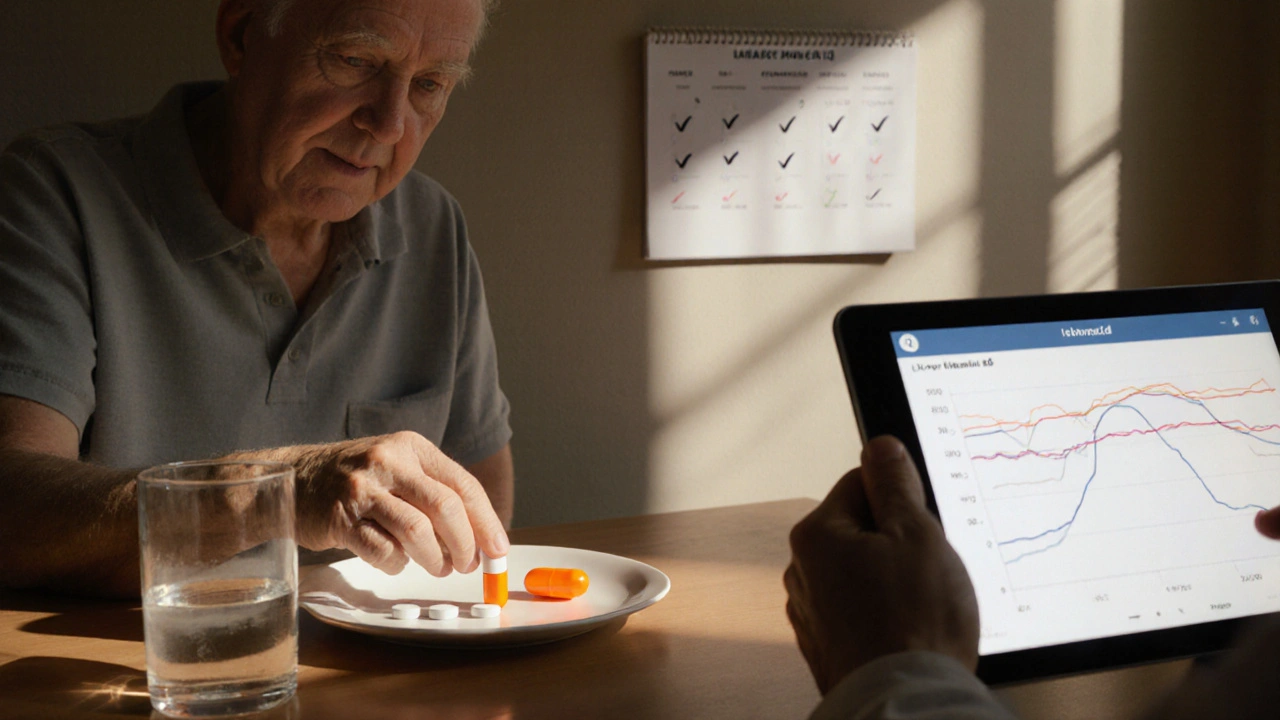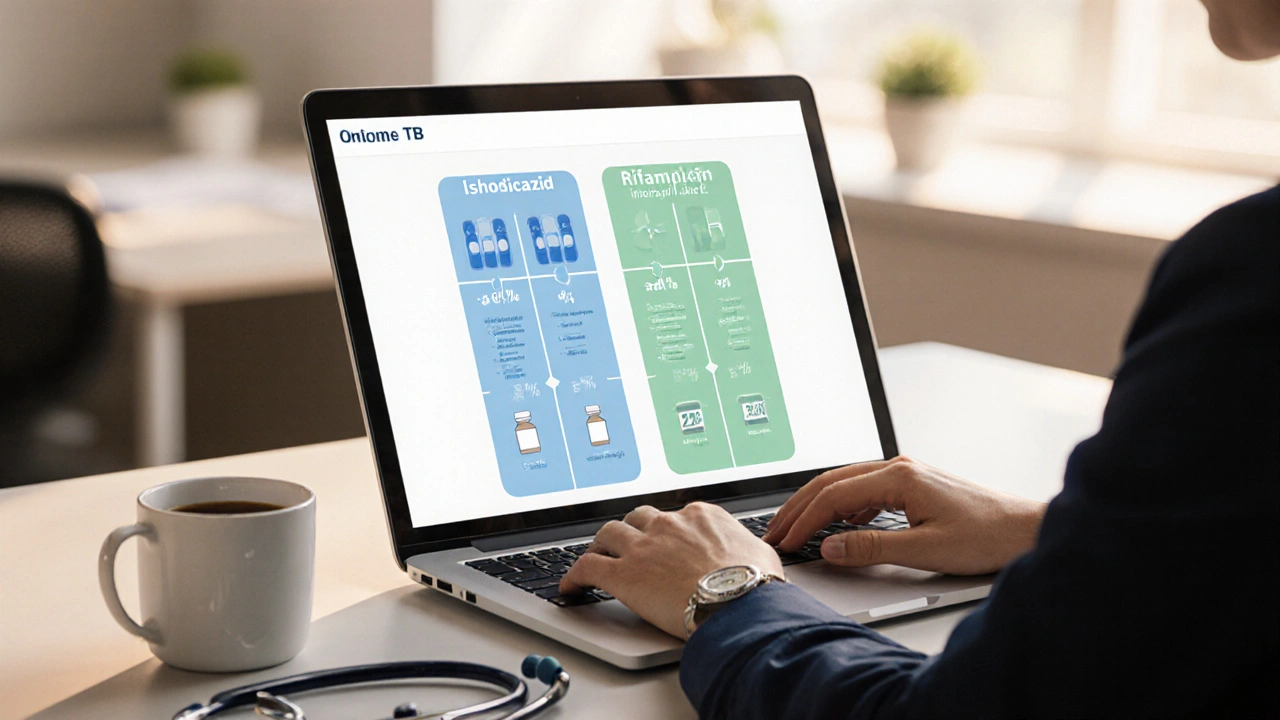TB Drug Comparison Tool
Quick Facts About TB Drugs
Primary Use: Latent TB (LTBI); continuation phase of active TB
Dosage: 300 mg PO daily
Duration: 6 months (LTBI) or 4 months (continuation)
Side Effects: Liver toxicity, peripheral neuropathy (preventable with B6)
Primary Use: LTBI (4-mo regimen) & active TB
Dosage: 600 mg PO daily
Duration: 4 months (LTBI) or 6 months (active with isoniazid)
Side Effects: Hepatotoxicity, drug-interactions (CYP inducer), orange body fluids
Primary Use: Intensive phase of active TB
Dosage: 15 mg/kg PO daily
Duration: 2 months (often combined with 4-drug regimen)
Side Effects: Optic neuritis (visual acuity loss), rash
Primary Use: Intensive phase of active TB
Dosage: 20-25 mg/kg PO daily
Duration: 2 months (first-line regimen)
Side Effects: Liver toxicity, hyperuricemia
Primary Use: MDR-TB (with background regimen)
Dosage: 400 mg PO daily for 2 weeks, then 200 mg three times weekly
Duration: 6 months
Side Effects: QT prolongation, hepatic enzymes elevation
Primary Use: MDR-TB (with background regimen)
Dosage: 100 mg PO twice daily
Duration: 6 months
Side Effects: QT prolongation, nausea
When treating tuberculosis, Isoniazid is often the go‑to drug, but it isn’t the only option on the table. Patients and clinicians alike wonder how it stacks up against alternatives like rifampicin or newer agents such as bedaquiline. This article breaks down the key differences-efficacy, dosing, side‑effects, resistance and cost-so you can decide which regimen fits a specific case.
Key Takeaways
- Isoniazid remains the gold standard for latent TB infection (LTBI) because of its simple once‑daily dosing and high cure rates.
- Rifampicin offers a shorter 4‑month course for LTBI but carries more drug‑interaction risk.
- Ethambutol and pyrazinamide are essential in the intensive phase of active TB but are rarely used alone.
- Newer drugs like bedaquiline and delamanid are reserved for multidrug‑resistant TB (MDR‑TB) and require close monitoring.
- Choosing a regimen depends on infection type (latent vs active), patient comorbidities, and potential liver toxicity.
What Is Isoniazid?
Isoniazid is a bactericidal antitubercular medication that targets the mycolic acid synthesis pathway in Mycobacterium tuberculosis. First approved in the 1950s, it quickly became the backbone of both latent and active TB regimens because of its high potency and low cost.
Typical dosing for adults is 300mg taken orally once daily, taken for six months when treating latent infection. For active disease, isoniazid is combined with other drugs in the continuation phase (usually four‑drug therapy for two months followed by isoniazid plus rifampicin for four months).
How Isoniazid Works and When It’s Used
Isoniazid enters the bacterial cell, where it is activated by the enzyme KatG. The activated form blocks the enzyme InhA, halting mycolic acid production-an essential component of the mycobacterial cell wall. Without a sturdy wall, the bacterium cannot survive.
Because it works best on actively dividing bacteria, isoniazid excels in preventing latent infection from progressing. In high‑risk groups (e.g., recent converters, HIV‑positive patients), a six‑month isoniazid course reduces the risk of active TB by up to 90%.
Common Alternatives to Isoniazid
Below are the most frequently considered alternatives, each defined with its own microdata block for clarity.
Rifampicin is a bactericidal drug that inhibits RNA synthesis by binding to the bacterial DNA‑dependent RNA polymerase. It is used in both latent and active TB regimens and can shorten therapy to four months for LTBI when combined with isoniazid or taken alone.
Ethambutol is a bacteriostatic agent that disrupts arabinogalactan synthesis, an essential component of the mycobacterial cell wall. It is used primarily in the intensive phase of active TB to prevent the emergence of resistance.
Pyrazinamide works best in acidic environments, such as those found inside macrophages. It is a key player in the first‑two‑month intensive phase of standard TB therapy, contributing to rapid bacterial kill.
Bedaquiline is a diarylquinoline that inhibits mycobacterial ATP synthase. Approved for multidrug‑resistant TB (MDR‑TB) in 2012, it is given alongside a background regimen for six months.
Delamanid blocks mycolic acid synthesis through a different mechanism than isoniazid, offering another option for MDR‑TB when combined with other second‑line drugs.

Criteria for Comparing TB Drugs
- Efficacy: Cure rates in clinical trials for latent vs active infection.
- Dosing Convenience: Frequency, pill burden, and need for fasting.
- Side‑Effect Profile: Hepatotoxicity, visual changes, drug‑interaction potential.
- Resistance Risk: Rates of primary and acquired resistance.
- Cost & Accessibility: Price per month in high‑income vs low‑income settings.
Side‑by‑Side Comparison Table
| Drug | Primary Use | Standard Dose (Adult) | Typical Duration | Major Side Effects | Resistance Rate |
|---|---|---|---|---|---|
| Isoniazid | Latent TB (LTBI); continuation phase of active TB | 300mg PO daily | 6months (LTBI) or 4months (continuation) | Liver toxicity, peripheral neuropathy (preventable with B6) | ~5% in high‑burden regions |
| Rifampicin | LTBI (4‑mo regimen) & active TB | 600mg PO daily | 4months (LTBI) or 6months (active with isoniazid) | Hepatotoxicity, drug‑interactions (CYP inducer), orange body fluids | ~2% (global) |
| Ethambutol | Intensive phase of active TB | 15mg/kg PO daily | 2months (often combined with 4‑drug regimen) | Optic neuritis (visual acuity loss), rash | Rare when used in combination |
| Pyrazinamide | Intensive phase of active TB | 20-25mg/kg PO daily | 2months (first‑line regimen) | Liver toxicity, hyperuricemia | Low; resistance indicates prior exposure |
| Bedaquiline | MDR‑TB (with background regimen) | 400mg PO daily for 2weeks, then 200mg three times weekly | 6months | QT prolongation, hepatic enzymes elevation | Resistance emerging when used without companion drugs |
| Delamanid | MDR‑TB (with background regimen) | 100mg PO twice daily | 6months | QT prolongation, nausea | Rare, still under surveillance |
When to Choose Isoniazid Over Alternatives
If a patient has confirmed latent infection, no contraindication to liver‑affecting drugs, and can adhere to a six‑month schedule, isoniazid remains the most cost‑effective choice. It works well in populations where drug‑interaction risk is high-such as patients on antiretrovirals-because rifampicin would reduce levels of many HIV meds.
For patients who cannot tolerate a six‑month course (e.g., due to travel or adherence concerns), a four‑month rifampicin regimen may be preferable, provided they undergo baseline liver function testing and close monitoring for drug interactions.
In active disease, isoniazid alone is never sufficient. It must be combined with rifampicin, pyrazinamide, and ethambutol in the intensive phase, then continued with isoniazid (or rifampicin) in the continuation phase. The decision to drop isoniazid after the intensive phase depends on susceptibility testing.
Practical Tips & Common Pitfalls
- Vitamin B6 supplementation: Give 25mg pyridoxine daily to prevent peripheral neuropathy, especially in diabetics or alcohol users.
- Baseline and monthly liver tests: Elevations >3× ULN warrant temporary discontinuation.
- Adherence monitoring: Use directly observed therapy (DOT) or digital adherence tools for high‑risk patients.
- Avoiding drug‑interaction surprises: Rifampicin induces CYP3A4; review all concurrent meds before prescribing.
- Pregnancy considerations: Isoniazid is category C; benefits usually outweigh risks, but pyrazinamide is also considered safe.
Next‑Step Guide for Clinicians
- Confirm infection status (latent vs active) with a tuberculin skin test or IGRA and chest imaging.
- Run baseline labs: liver function, CBC, renal function, and pregnancy test if applicable.
- Select regimen based on risk factors (e.g., HIV, diabetes, medication list).
- Prescribe isoniazid with pyridoxine for LTBI unless contraindicated.
- Schedule follow‑up labs at 2 weeks, then monthly; adjust therapy if transaminases rise >3× ULN.
- Document adherence and side‑effect monitoring in the patient chart.

Frequently Asked Questions
Can I take isoniazid with alcohol?
Alcohol itself doesn’t interact with isoniazid, but it can worsen liver toxicity. If you drink heavily, your doctor may choose a different regimen or monitor liver enzymes more closely.
Why is a vitamin B6 supplement recommended?
Isoniazid interferes with pyridoxine metabolism, leading to peripheral neuropathy in up to 5% of patients. Supplementing 25mg daily prevents this side effect without affecting TB treatment.
Is the four‑month rifampicin regimen as effective as six‑month isoniazid?
Large randomized trials (e.g., the 2023 WHO Collaborative Study) showed comparable efficacy for preventing active TB, with slightly higher rates of drug‑interaction issues. Choice often hinges on patient preference and liver health.
What if my lab shows mild liver enzyme rise?
For transaminases 2-3× ULN, continue therapy with close monitoring and ensure the patient avoids alcohol and hepatotoxic drugs. If levels exceed 3× ULN or symptoms appear, pause treatment and re‑evaluate.
When are bedaquiline or delamanid necessary?
These agents are reserved for multidrug‑resistant TB where the bacteria resist isoniazid and rifampicin. They’re added to a background regimen of at least three other effective drugs, and patients need ECG monitoring for QT prolongation.



Comments
I don't see why anyone would bother comparing these drugs when the guidelines already tell you what to use.
Great job breaking this down!!! This table is super helpful!!! I love how you laid out the dosing and side‑effects side by side!!! It makes picking the right regimen a breeze!!! Keep the awesome content coming!!!
I have been treating TB for over a decade and I still find these summaries fascinating. The mechanism of isoniazid is elegantly simple yet powerful. It knocks out the mycolic acid layer and forces the bacteria to crumble. Rifampicin, on the other hand, attacks the RNA polymerase and shuts down transcription. Both drugs are bactericidal but they differ in how quickly they act. When you add pyrazinamide you get an acidic environment that speeds up killing. Ethambolum is mostly there to protect against resistance during the intensive phase. Bedaquiline and delamanid are lifesavers for MDR cases but they require cardiac monitoring. The liver toxicity of isoniazid and rifampicin is a real concern especially in patients with alcohol use. Vitamin B6 supplementation is a cheap fix for the neuropathy risk. Drug interactions with rifampicin can make HIV therapy a nightmare. The cost factor cannot be ignored in low‑resource settings where isoniazid remains the workhorse. Shorter regimens with rifampicin are attractive but adherence monitoring is key. Ultimately the choice of regimen must be individualized based on patient comorbidities and local resistance patterns. This is why having a clear comparison chart is invaluable for clinicians.
I appreciate the clear layout; the side‑by‑side table really helps visual learners.
Adding the vitamin B6 note is a nice touch for peripheral neuropathy prevention.
The article glosses over the pharmacokinetic differences that matter in poly‑pharmacy patients. For instance, rifampicin’s CYP induction can reduce the efficacy of many antiretrovirals, a point that should be highlighted rather than buried.
While the comparison is thorough, it skirts the issue of cost disparity which is critical in endemic regions. A brief mention of price per month would make the guide more pragmatic.
Whoa, this looks like a textbook fell into the comment section! So many tables, so little drama-actually, the drama is in the side‑effects! I mean, orange urine? That's wild!
Love how the guide keeps the tone upbeat-makes a heavy topic feel manageable. Keep sprinkling those practical tips!
Honestly, the focus on drug efficacy feels hollow without addressing the socioeconomic barriers patients face daily.
From a pharmacological standpoint, the comparative resistance rates align with recent WHO data. Notably, the emergence of bedaquiline resistance underscores the necessity of companion drugs in MDR‑TB regimens.
The comprehensive nature of this comparison provides a valuable reference for clinicians seeking to tailor therapy based on individual patient profiles, especially when considering comorbid conditions such as HIV infection or hepatic impairment; however, the omission of specific monitoring intervals for liver enzymes may lead to suboptimal safety practices and should be rectified in future revisions.
I think we can all agree that balancing efficacy with tolerability is key, and this chart does a solid job of laying out the trade‑offs.
As someone who has worked in TB programs across three continents, I can attest that the inclusion of vitamin B6 dosing has saved countless patients from neuropathy; make sure to pair it with isoniazid for the full protective effect.
Cool table, thanks for the quick read-makes choosing a regimen way easier.
Great effort! I’d suggest double‑checking the spelling of ‘pyrazinamide’ and adding a footnote on QT monitoring for bedaquiline.
The article is solid but could benefit from a deeper dive into pharmacodynamics; some jargon around ATP synthase inhibition would satisfy the expert readers.
Wow!! This is like a blockbuster for med students-so many details!!
One must recognize that the simplistic binary presented here fails to capture the nuanced pharmacogenomic interactions that define modern TB therapy; a more elitist discourse would elevate the discussion.
In the grand scheme, choosing a TB regimen mirrors the larger ethical balance between individual care and public health responsibility.